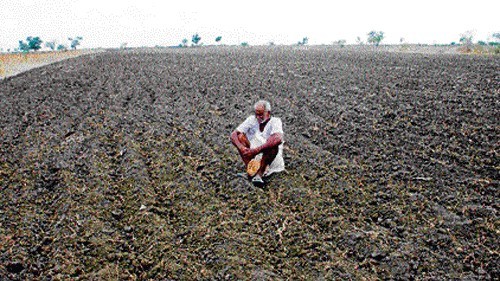
Climate change has supercharged the devastation from tropical storms, heat waves, and floods in India.
Credit: DH File Photo
New Delhi: Rising sea levels and falling labour productivity due to climate change would reduce India’s gross domestic product (GDP) by 24.7 per cent by 2070, among the worst affected in Asia-Pacific region, the Asian Development Bank (ADB) said on Thursday.
The impact of climate change could reduce GDP in developing Asia-Pacific by 17.9 per cent by 2070 under a high-end greenhouse gas emissions scenario, rising to 41 per cent by 2100, as per the ADB’s Asia-Pacific climate report.
Bangladesh is estimated to the worst affected in the region with a hit of 30.5 per cent of GDP, followed by Vietnam at 30.2 per cent, Indonesia 26.8 per cent, India 24.7 per cent, the rest of Southeast Asia at 23.4 per cent, higher-income Southeast Asia at 22.0 per cent, Pakistan 21.1 per cent, the Pacific 18.6 per cent, and the Philippines at 18.1 per cent.
If the climate crisis continues to accelerate, up to 300 million people in the region could be threatened by coastal inundation, and trillions of dollars of coastal assets could be damaged annually by 2070, Manila-headquartered ADB said in the research report.
“Sea-level rise and labour productivity effects would dominate the losses, with relative effects concentrated in lower-income and fragile economies and those with large coastal populations. The impacts will be regressive and hit vulnerable and poor people the hardest,” it said.
As per ADB, the developing Asia-Pacific region generated about half of global greenhouse gas emissions in 2021. The increase over the past 2 decades has been driven by rising domestic consumption, energy demand, and production for advanced economies. China accounted for two-thirds of the increase, while South Asia contributed 19.3 per cent and Southeast Asia 15.4 per cent.
“Climate change has supercharged the devastation from tropical storms, heat waves, and floods in the region, contributing to unprecedented economic challenges and human suffering. Urgent, well-coordinated climate action that addresses these impacts is needed before it is too late,” said ADB President Masatsugu Asakawa.
According to ADB, intensified and more variable rainfall, along with more extreme storms, will bring increasing landslides and floods. This will be most pronounced in mountainous and steeply sloped areas, such as the border area of India and China, where landslides may increase by 30 per cent–70 per cent under 4.7°C of mean global warming.
“The destructive power of typhoons and cyclones will double, and flood losses will increase due to more concentrated rainfall and glacial melt. Climate-dependent sectors such as agriculture, forestry, and fisheries will face diminished output,” it said.
On the mitigation front, the report noted that the region is well placed to embrace renewable energy in driving a transition to net zero, and that forging ahead with domestic and international carbon markets can help achieve climate action goals cost effectively.
The report values annual investment needs for regional countries to adapt to global warming between $102 billion to $431 billion—far exceeding the $34 billion of tracked adaptation finance in the region in 2021–2022.